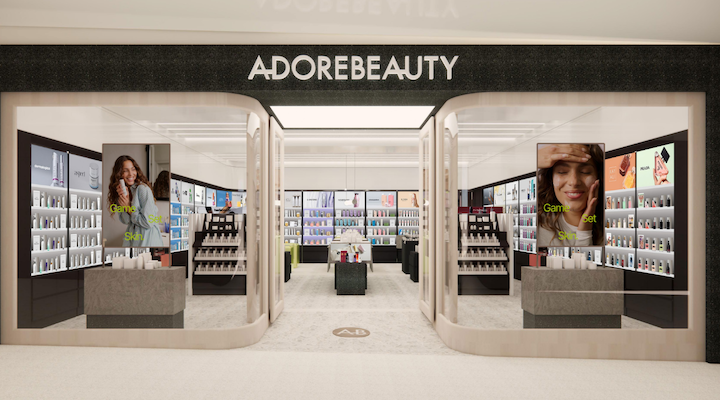Adore Beauty hit record profitability in FY25, a period that marked its strategic expansion into physical retail after more than 20 years of operating online only. The retailer’s EBITDA was $8.1 million, up 67.8 percent on the prior corresponding period, which CEO Sacha Laing attributed to its strategic plan. “Our strong FY25 performance in what was a challenging consumer market reflects significant progress in the delivery of our strategic plan,” said Laing, who has helmed the retai
retailer since September last year.
The company aims to achieve 30 per cent revenue growth and double its EBIT margin by the end of FY27. It also plans to operate a national footprint of more than 25 stores by 2027.
“Momentum has continued to build into the new financial year with trading in the first seven weeks up 9 per cent on the same period last year,” Laing said.
Here’s a closer look at three strategic changes that the group implemented in FY25 and how they could help position Adore Beauty for success looking forward.
Being present
According to Laing, 87 per cent of revenue in the beauty category flows through physical stores, while only 13 per cent comes from online.
“Our higher-margin retail stores support brand awareness and customer acquisition with almost a third of in-store transactions being from new customers,” Laing stated.
“Digitally enabled stores are also introducing new brands to our existing customers, with 78 per cent purchasing a brand in-store that they haven’t purchased online previously,” he added.
The acceleration of Adore Beauty’s physical store network reflects the realities of consumer behaviour, according to retail consultant Teresa Sperti.
“With strong brand recognition already in the market, it’s not surprising that both new and existing customers are responding positively to Adore Beauty’s physical store footprint,” Sperti, founder of Arktic, told Inside Retail.
“That said, it represents a particularly interesting test case in Australia, where few retailers have successfully built a scalable online business before transitioning into physical retail — making Adore’s expansion one to watch closely,” she added.
Going luxe
Adore Beauty added 60 new brands to its product range in FY25, including Hermes, Prada Beauty and Gucci Beauty, a step change from its previous focus on more accessible brands.
According to Sperti, this product diversification strategy reflects a deliberate push to premiumise its offering in an increasingly cluttered, not to mention competitive, beauty market.
“With players such as Mecca, Sephora, department stores, pharmacies and marketplaces like Amazon all competing for share, differentiation is critical,” Sperti shared.
“Pharmacies and mass retailers are intensifying competition at the lower end of the market, so a shift towards exclusive and luxury brands not only gives Adore a clear point of difference but also taps into higher-value customers who are more engaged and willing to spend,” she continued.
This strategy has the potential to strengthen Adore’s positioning as an authority in beauty, drive margin expansion and deepen loyalty among consumers seeking prestige brands.
Beyond adding 60 new brands to its product mix, Adore Beauty is investing further in its owned brands, which it expects to account for more than 6 per cent of group revenue in FY26.
Fostering loyalty
Laing cited Adore Beauty’s new loyalty program as one of the ways the retailer is diversifying its operating model to increase its addressable market, strengthen its core e-commerce business and materially improve margins.
The group gave its loyalty program, Adore Society, a makeover in June, rebranding it as Adore Rewards and moving to a cashback model to encourage greater customer spend.
“Our new ‘Spend & Earn’ offer, $20 for every $250 spent, directly encourages that behaviour and rewards customers for consolidating their beauty and wellbeing shopping experience with us,” Jeremy Eaton, head of loyalty and acquisition at Adore Beauty, told Inside Retail following the rollout.
In particular, Adore Rewards incentivises customers to make repeat purchases, targeting the group’s largest opportunity to increase retention and share-of-wallet.
According to Sperti, Adore’s loyalty program is likely to stand out in a crowded market because customers know exactly what they are earning and can readily apply it to future purchases, which in turn drives frequency, engagement and larger basket sizes.
“In a market that has become increasingly value-focused, cashback schemes and cash or voucher-based rewards are particularly attractive because they provide tangible and immediate benefits, unlike traditional points-based systems which can feel abstract,” Sperti explained.
“With a generous give-back rate of 8 per cent, the program is designed to reward loyalty while standing out in a crowded market, though as the base grows and more sales flow through members, it will be interesting to monitor how the program evolves to balance customer appeal with long-term profitability,” she concluded.







